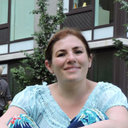Yttrium-aluminum-garnet laser therapy of esophageal granular cell tumor.
Ключевые слова
абстрактный
BACKGROUND
Granular cell tumor (GCT) is a rare lesion. Approximately 4% to 6% of these tumors occur in the gastrointestinal tract, one-third of them affecting the esophagus. Almost all GCTs are benign lesions. Approximately 1% to 3% are malignant. Endoscopic ultrasonography (EUS) is a diagnostic support. The best treatment for esophageal GCT is not yet clear, whether surgical excision, periodic observation, endoscopic excision, or yttrium-aluminum-garnet (YAG) laser therapy.
METHODS
From November 1992 to December 2000, four patients with GCTs of the esophagus were observed. All the patients underwent EUS evaluation and endoscopic YAG laser therapy of the esophageal neoplasm. At each session, a biopsy at the tumor site was obtained. The treatment was continued until endoscopic and histologic evidence of the tumor disappeared.
RESULTS
After the YAG laser therapy, no evidence of the tumor was found in any of the four patients with esophageal GCT. At this writing, the patients remain disease free after a mean follow-up period of 66 months. No complication has been observed. Only four sessions for each patient were necessary to eliminate the tumor.
CONCLUSIONS
Therapy with YAG laser was effective in all four patients with esophageal GCT, and complete necrosis of the submucosal neoplastic cells was achieved. Endoscopic YAG laser therapy appears to be a good compromise between esophageal dissection and long-term observation without tumor excision. Esophageal laser therapy is safe if correctly used, and previous EUS evaluation increases treatment safety.


